Michel Antunes
Bi-objective Framework for Sensor Fusion in RGB-D Multi-View Systems: Applications in Calibration
May 23, 2019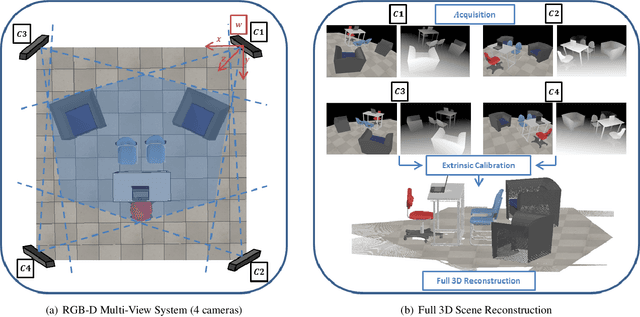
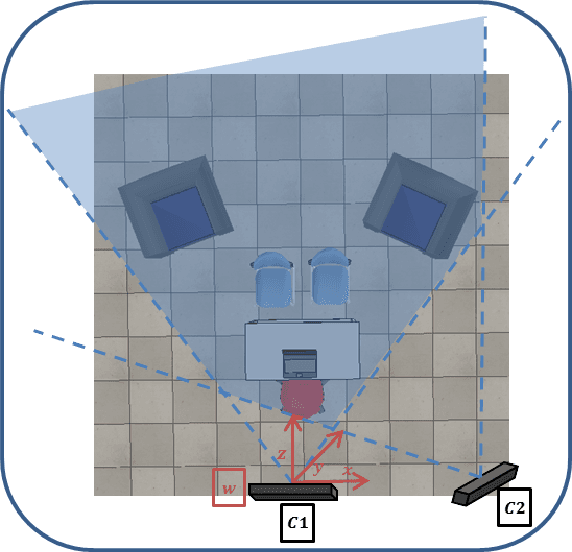
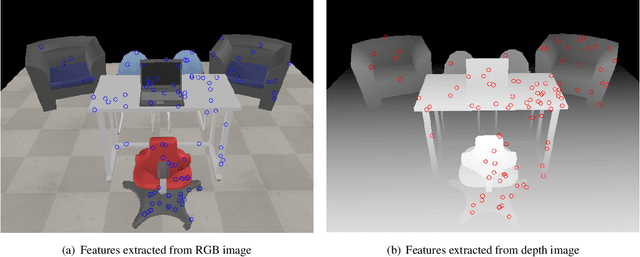
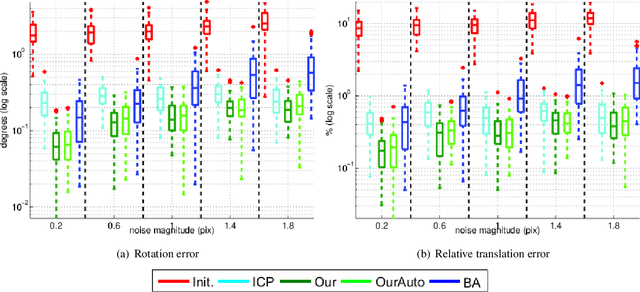
Abstract:Complete and textured 3D reconstruction of dynamic scenes has been facilitated by mapped RGB and depth information acquired by RGB-D cameras based multi-view systems. One of the most critical steps in such multi-view systems is to determine the relative poses of all cameras via a process known as extrinsic calibration. In this work, we propose a sensor fusion framework based on a weighted bi-objective optimization for refinement of extrinsic calibration tailored for RGB-D multi-view systems. The weighted bi-objective cost function, which makes use of 2D information from RGB images and 3D information from depth images, is analytically derived via the Maximum Likelihood (ML) method. The weighting factor appears as a function of noise in 2D and 3D measurements and takes into account the affect of residual errors on the optimization. We propose an iterative scheme to estimate noise variances in 2D and 3D measurements, for simultaneously computing the weighting factor together with the camera poses. An extensive quantitative and qualitative evaluation of the proposed approach shows improved calibration performance as compared to refinement schemes which use only 2D or 3D measurement information.
Localized Trajectories for 2D and 3D Action Recognition
Apr 10, 2019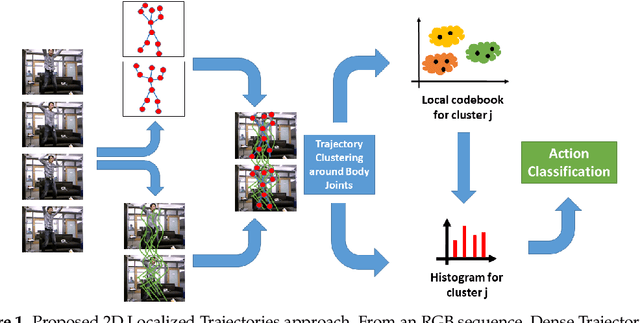
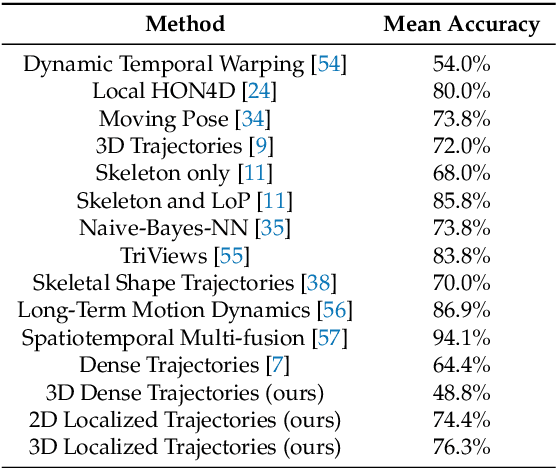
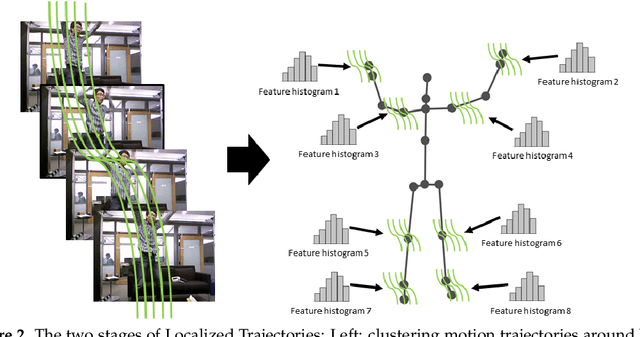
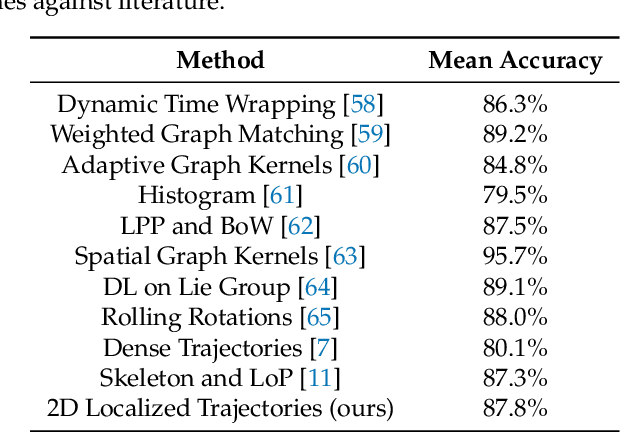
Abstract:The Dense Trajectories concept is one of the most successful approaches in action recognition, suitable for scenarios involving a significant amount of motion. However, due to noise and background motion, many generated trajectories are irrelevant to the actual human activity and can potentially lead to performance degradation. In this paper, we propose Localized Trajectories as an improved version of Dense Trajectories where motion trajectories are clustered around human body joints provided by RGB-D cameras and then encoded by local Bag-of-Words. As a result, the Localized Trajectories concept provides a more discriminative representation of actions as compared to Dense Trajectories. Moreover, we generalize Localized Trajectories to 3D by using the modalities offered by RGB-D cameras. One of the main advantages of using RGB-D data to generate trajectories is that they include radial displacements that are perpendicular to the image plane. Extensive experiments and analysis are carried out on five different datasets.
 Add to Chrome
Add to Chrome Add to Firefox
Add to Firefox Add to Edge
Add to Edge